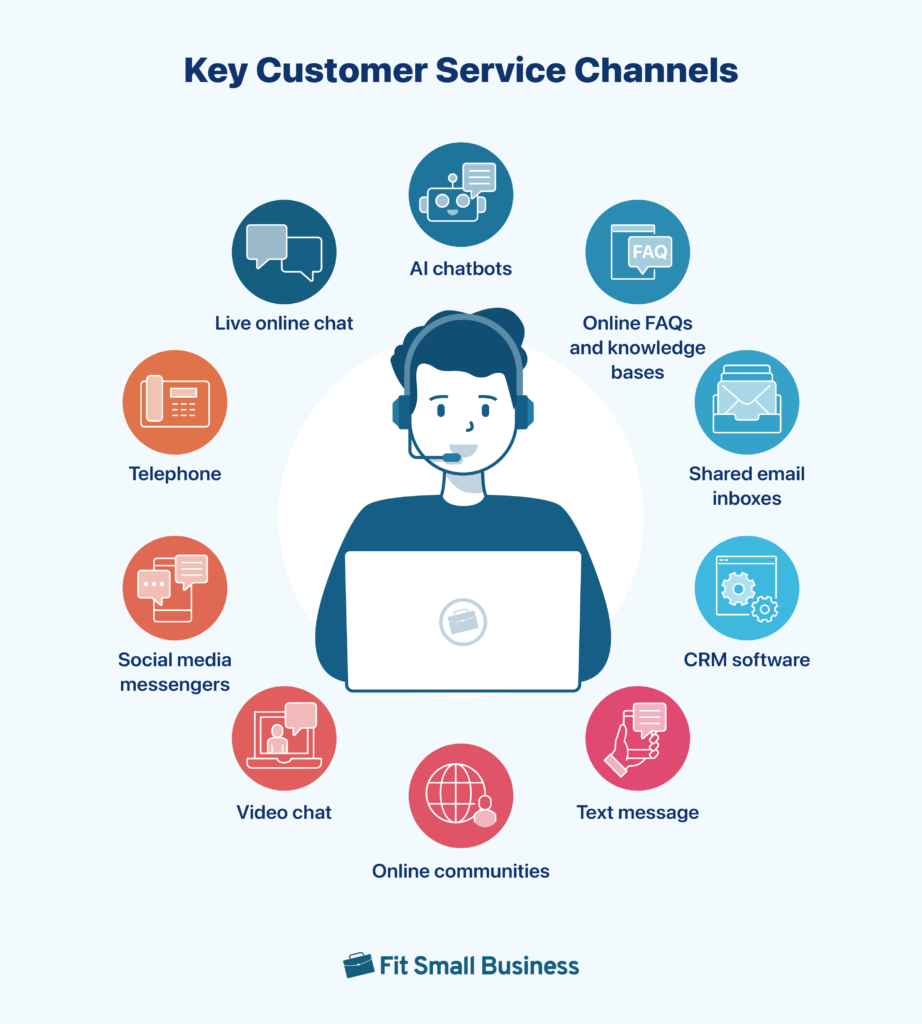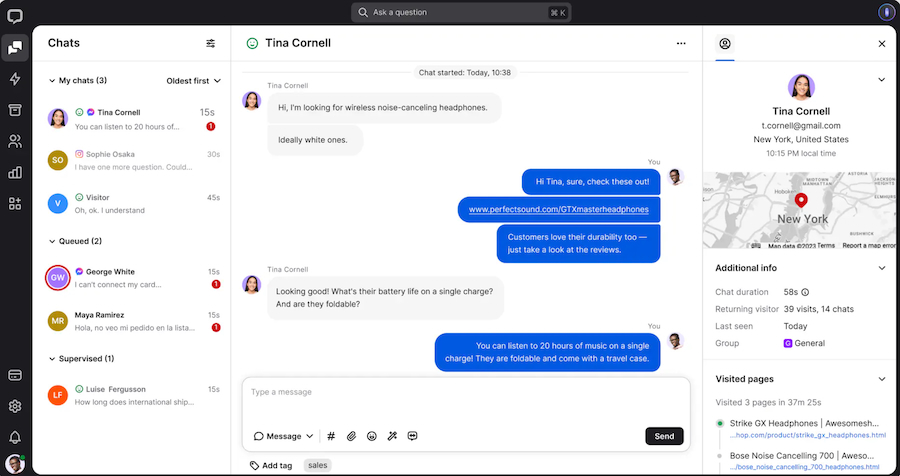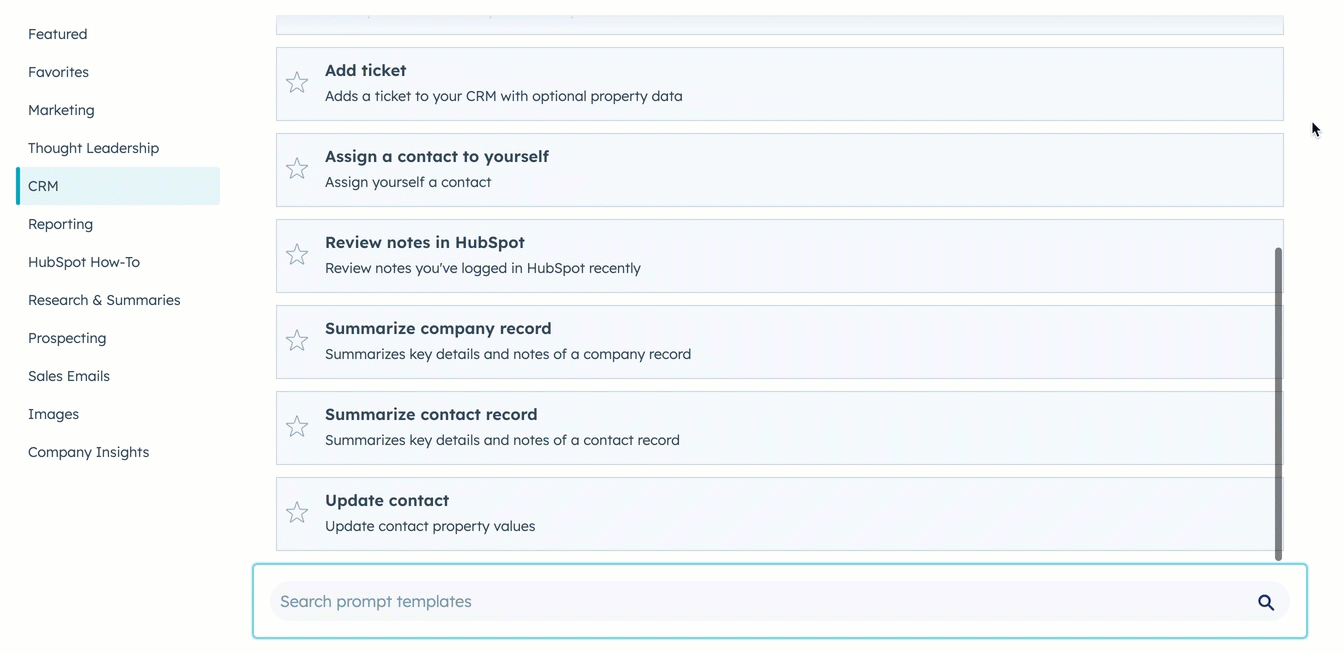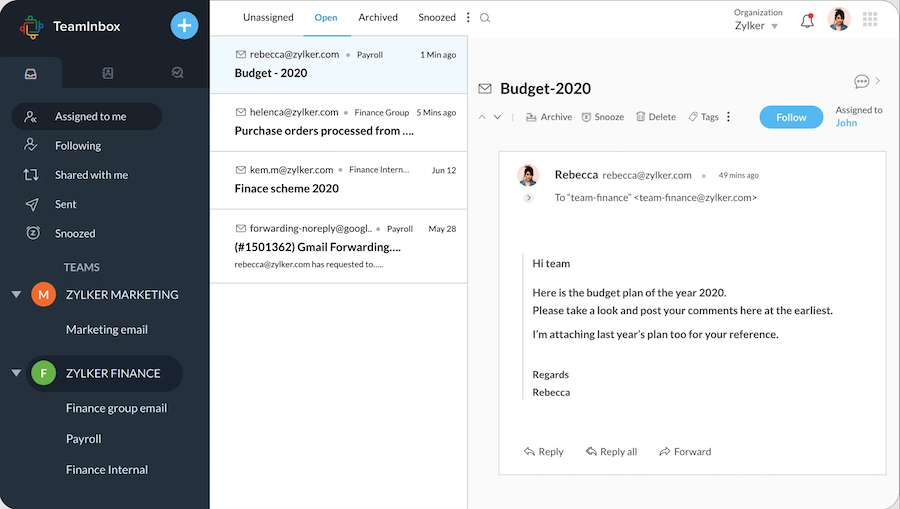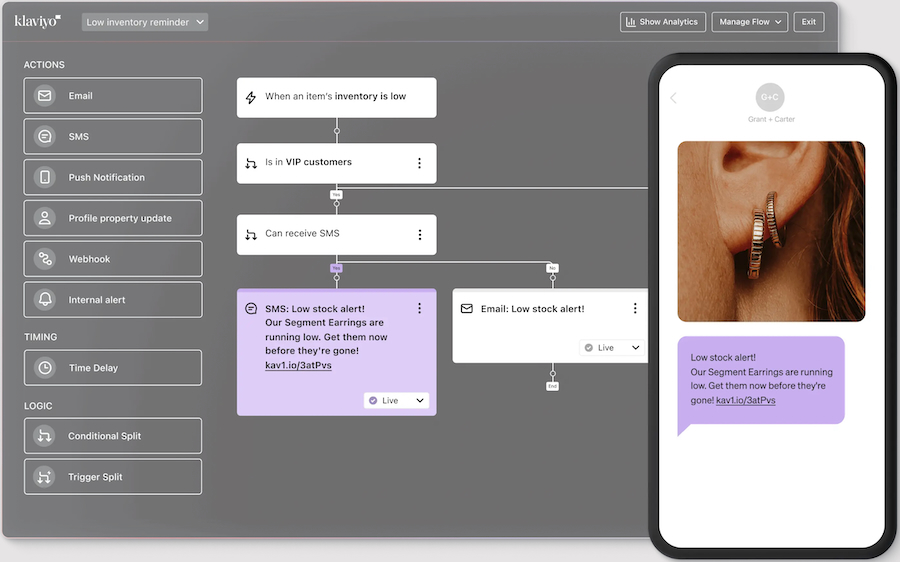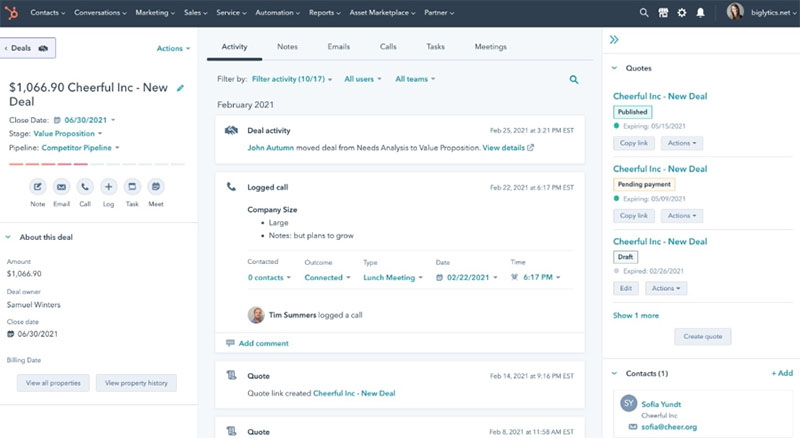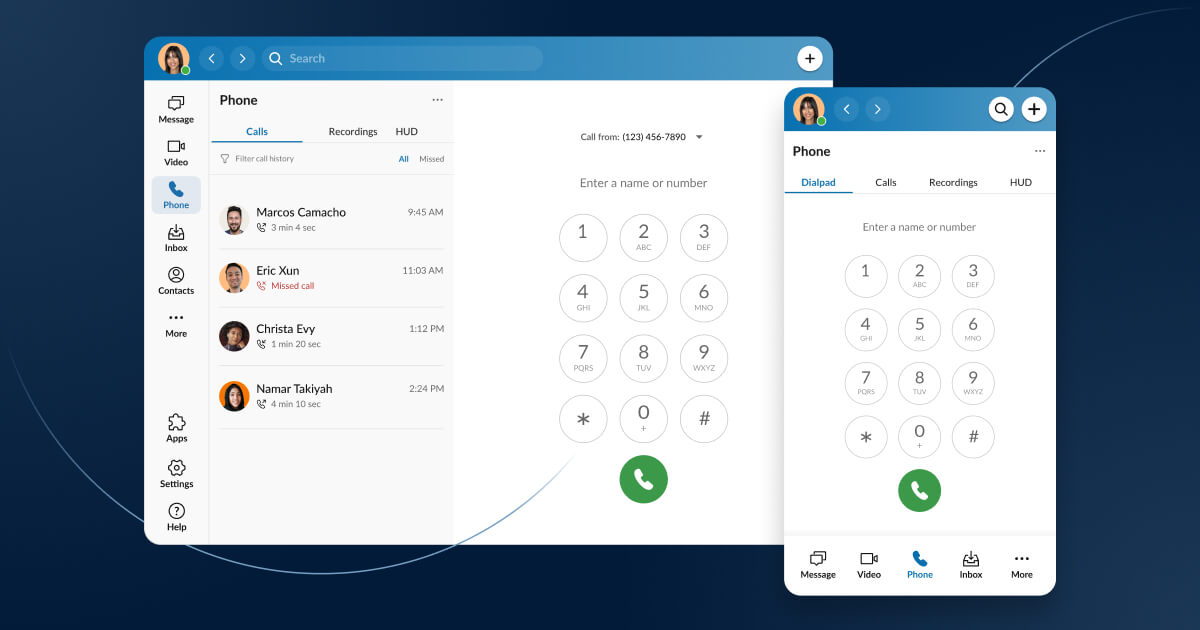As a small or startup business, it’s imperative that you offer customers as many different customer support channels as possible. Not only is it important to reassure them that their investments in your products or services are secure, but it’s vital that you’re able to provide support in case something goes wrong. Thankfully, there are plenty of free or low-cost customer service channels that nearly any small business can start using today.
1. Live Online Chat
Live online chat empowers customers by letting them interact with a customer support representative virtually in real time. Not only does it take a natural, conversational approach to customer service and support, but it also gives the user the opportunity to ask virtually any question without being restricted by FAQs, knowledge bases, or chatbots. This makes live chat one of the top digital channel choices for customer service for small businesses.
One of the most popular live online chat options available today is LiveChat. It boasts an impressive array of live chat tools, including boilerplate or canned responses, online file sharing, and the option to transfer an active chat to another agent. Moreover, LiveChat’s sneak-peek feature lets agents preview messages before customers send them.
A LiveChat session with a chat list, chat feed, and customer details (Source: LiveChat)
2. AI-Driven Chatbots
Given the recent emergence of next-gen AI systems, it’s no surprise to see the technology used to supplement customer service and support. Some of the current AI-driven chatbots are so advanced that it’s nearly impossible to tell them apart from a real agent—and they’ll only become more lifelike as the technology improves.
HubSpot CRM’s ChatSpot, for example, is one of the most sophisticated AI chatbots to date. Their service offers an integrated AI chatbot builder that makes it easy to create and customize your own chatbot. Powered by GPT, their chatbots can provide 24/7 service to customers. At the same time, the chatbot automatically qualifies leads, generates personalized responses, and instantly summarizes CRM data to make it easier to understand.
HubSpot CRM’s ChatSpot AI chatbot summarizes CRM data. (Source: HubSpot)
3. Online FAQs and Knowledge Bases
Self-service customer support channels like online FAQs and knowledge bases can be used to answer the most common customer questions. They can also provide information about products or services and showcase your company.
Taking the time to detail your company history, mission statement, and even a shortlist of achievements within your knowledge base can help build your brand and create trust with your customer base.
At the bare minimum, however, an online FAQ can reduce the overall workload for your support staff and help your organization save some money at the same time. Online FAQs and knowledge bases are accessible 24/7 and, once established, are easy to edit and update as needed.
4. Shared Email Inboxes
If you want a centralized platform for all your team’s incoming emails, a shared email inbox is most likely the best option. This option gives customers a single email to communicate with and lets agents answer specific inquiries as needed. Shared email inboxes are also a great way to record all customer interactions, as the digital paper trail includes past conversations.
Zoho TeamInbox is a great choice for today’s customer service teams. It’s a highly collaborative environment that includes the ability to auto-assign emails, re-assign emails to specific agents, and more. Agents can even connect their personal emails to the Zoho Team Inbox to maintain all of their emails in one convenient location.
A Zoho TeamInbox shared inbox with a list of open messages (Source: Zoho)
5. Social Media Messengers
Nearly 63% of the world uses social media—and this number is only growing. With so many people using social media sites like Facebook, LinkedIn, and others, it only makes sense to turn your social media presence into another customer service channel.
Most social media messengers function as a shared inbox for your team. Instead of each agent making their own account, they simply access the messenger to handle customer inquiries. While this makes it easy to see which customers have and haven’t been served, most social media messengers lack the advanced features of dedicated customer service software.
6. SMS (Text) Messaging
Once seen as too informal for business use, SMS (short message service) messages have since transformed into one of the most convenient customer support channels available today. Instead of having to access their computer, dial a support line, or search through an online knowledge base, customers can simply grab their phone and send a message within minutes.
Currently supporting nearly 20,000 brands, Klaviyo supports multichannel segmentation to deliver relevant text messages. It also leverages multichannel flows to drive consistency across all support channels. Plus, it offers hundreds of third-party integrations that let you expand the platform’s functionality even further.
An example of a Klaviyo SMS marketing multichannel flow with audience segmentation (Source: Klaviyo)
7. Online Communities
Some organizations boast extensive online communities filled with users eager to share their experiences and help others. It can be difficult to get a new community up and running, especially for a small or startup business. Nevertheless, establishing an online message board early in your company’s lifespan will give it plenty of time to grow organically.
In some cases, you might leverage social media to host and promote your community. This is useful for those with limited advertising budgets as well as those who haven’t launched their own websites yet, as most of them can be set up in a matter of minutes and at no additional cost to you.
8. Video Chat
Online video chat is becoming more popular, too. Many modern video chat platforms like Zoom are available via desktop, laptop, or smartphone. This gives customers several channels to pursue support from a human agent. You can even combine this with other channels, like text messaging, email, and telephone support, to give them even more options to contact your team.
Zoom comes with intuitive meeting controls for an effortless user experience. (Source: Zoom)
However, video chat can be difficult to maintain. Live video chats typically require a quiet atmosphere that is free of both auditory and visual distractions, which isn’t always available in the office of a small or startup business. Those who do have the resources to pull it off, however, can add yet another service channel for their customers.
9. Customer Relationship Management (CRM) Software
Modern customer relationship management (CRM) software comes in all shapes and sizes. From simple, one-size-fits-all platforms to full-scale, highly customizable solutions, CRM software makes it easy to triage customer support issues, track past interactions through various customer care channels, segment customers, and more. If it fits the customer service channel definition, it’s probably compatible with modern CRM software.
HubSpot CRM, for example, provides a free solution that supports unlimited data processing and support for up to 1,000,000 contacts. It offers a universal inbox to handle incoming and outgoing emails, live chat support, a help desk with a support ticketing system, and a customer feedback portal.
While there is a plethora of other CRM software solutions available on the market today, very few platforms can match the functionality—or pricing—of HubSpot CRM.
The HubSpot CRM can create a new deal from an existing contact. (Source: HubSpot)
10. Telephone
Whether clients communicate via landline or smartphone, telephone-based support can be accessed from nearly anywhere and at any time. This channel allows your agents to take a more personal approach to the customer support process and makes it easy to build trust when dealing with serious issues. Based on convenience alone, it’s a great option for businesses that are just starting out.
You can provide traditional support via telephone or a VoIP phone system like RingCentral, which offers robust cloud-based phone features. This platform offers cross-platform compatibility, team meetings, and a multilevel auto-attendant system. Although some of the larger enterprises are emphasizing alternative customer channels over telephone support, it’s still a valuable tool—especially for small businesses.
The RingCentral app features compact mode, so you can shrink or expand the window to free up desktop space. (Source: RingCentral)
Frequently Asked Questions (FAQs)
The number of channels customers use depends on their location and what they’re doing. For instance, consumers typically use, on average, eight customer service channels, while business buyers use around 10 channels to engage with companies.
While most customers prefer different communication channels to engage with companies, 93% prefer email, and 88% prefer phone calls. Other top-ranking channels are in-person meetings (86%), mobile apps (76%), online chat (72%), online portals (70%), SMS (66%), messenger apps and online knowledge bases (65%), and social media (64%). Online communities (49%) and video chat (48%) rank the lowest.
The phone is considered the most effective channel for customer service because it provides human connection, real-time communication, and complex issue resolution. Email is also an excellent option because it helps customers compose their thoughts without feeling pressured and enables them to describe their issues in detail. Plus, it provides the customer and the company with written proof of their interactions and resolutions.
Bottom Line
It’s important to meet your customers where they are. If most come from the internet, it only makes sense to offer digital customer service channels like live chat, chatbots, or email. On the other hand, those from a brick-and-mortar location or an in-person consultation might prefer telephone or SMS messaging support. It’s best to use support channels that your customers are comfortable with and provide multiple options.
